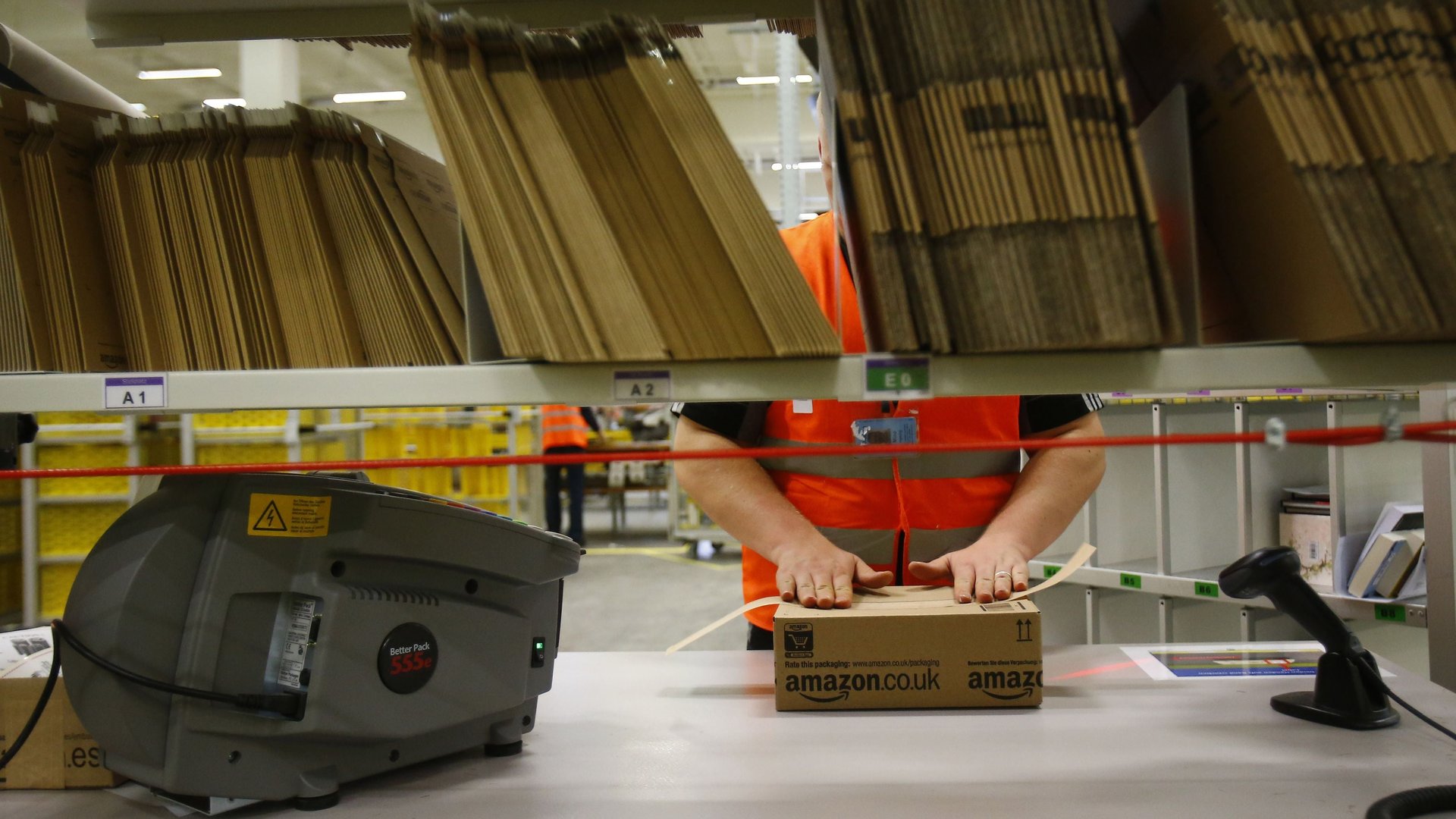The 20-year explosion in e-commerce has not increased US cardboard production
Have you ordered a tube of toothpaste online, only to have it arrive in a cardboard box the size of a small farm animal? You’re not alone in your frustration: Since 2009, Amazon customers have submitted 33 million packaging-related comments, ratings, and photographs to the company, according to the New York Times.


Have you ordered a tube of toothpaste online, only to have it arrive in a cardboard box the size of a small farm animal? You’re not alone in your frustration: Since 2009, Amazon customers have submitted 33 million packaging-related comments, ratings, and photographs to the company, according to the New York Times.
But as counterintuitive as it may seem, e-commerce has not led to an overall increase in cardboard consumption in the US.
Over the last twenty years, e-commerce has evolved from a novelty into a $300 billion business category that includes diapers, cars, and every product in between. Each of these products—many of which can now be purchased with a tap of a plastic button or by talking into a countertop device—arrives in packaging, and as online shoppers buy ever more trivial items with ever greater frequency, the mounds of cardboard boxes they amass have raised questions about the impact of e-commerce on the environment.
Despite all this, the amount of cardboard shipped by US companies has actually decreased slightly since 1995, according to the Fibre Box Association, which has member businesses that account for 95% of industrial shipments of cardboard made from new and recycled materials in the US. (Imported cardboard only accounts for about 3% of cardboard boxes and containers purchased in the US.)
So how can the amount of cardboard in the United States have remained constant while e-commerce grew by $300 billion?
One reason is manufacturers across industries—not only e-commerce—have been improving their packaging to reduce the cost of shipping products. Sam Sheppard Fidler, the general manager at Smithers Pira, which consults on packaging, paper, and print industry supply chains, explains:
For example, a manufacturer may opt not to use full wrap-around corrugated cases and instead substitute corrugated trays shrink-wrapped in plastic. In some cases, this has gone further, eliminating the cardboard altogether. We see this in the shipping of carbonated drinks or bottled spring water where they are shrink-wrapped in plastic film only and then shipped on pallets. The use of less corrugated material in shipping, due to the use of lighter materials or simply alternative and cheaper ideas on how to ship products, would help to explain why the amount of cardboard out in the world seems to remain consistent despite the overall increase in shipping.
There are other theories. The Fibre Box Association has not yet published data about how much cardboard is used for e-commerce, but it may not represent a large enough percentage of cardboard usage to greatly impact the overall numbers. (The market research company IBISWorld estimates that nearly half of cardboard is used by food, beverage and agricultural producers.) Some businesses may also have shifted from cardboard to another packing material. Or, as people buy online, fewer goods may be shipped in boxes to stores.
Whatever the reason, the perception that online shopping has resulted in skyrocketing cardboard consumption isn’t backed up by the data.
Of course, it’s likely that cardboard consumption would be declining further if consumers didn’t rely on deliveries for daily purchases of soap and groceries. And regardless, there are still plenty of reasons to feel guilty about your Amazon Prime habit.